
Marketing Best Practices
Marketing Industrial Property: 3 Best Practices
To effectively market industrial real estate for lease or sale, you need to not only have a clear sense of the target audience but the local issues that will impact their needs.
Marketing different asset types can vary based on the key unique selling points and we’ve already covered the basics of retail property marketing in a previous post.
From location to facility amenities, your descriptions and marketing strategy need to perfectly match the demands of future investors, owner occupiers, manufacturers, distributors and tenants.
Below are three key best practices that will help reach your target audience when marketing industrial properties.
1. Build out the Essential Content
Property Description and Building Specifications
An effective industrial building description highlights overall building and lot size, key features, the location of the property, and its proximity to major transportation such as highways and mass transit. Other important building specifications to include:
- current and possible configuration of the property
- column spacing
- grade-level doors
- clear height
- number of docks (and size)
- electric, lighting and HVAC systems
- car parking
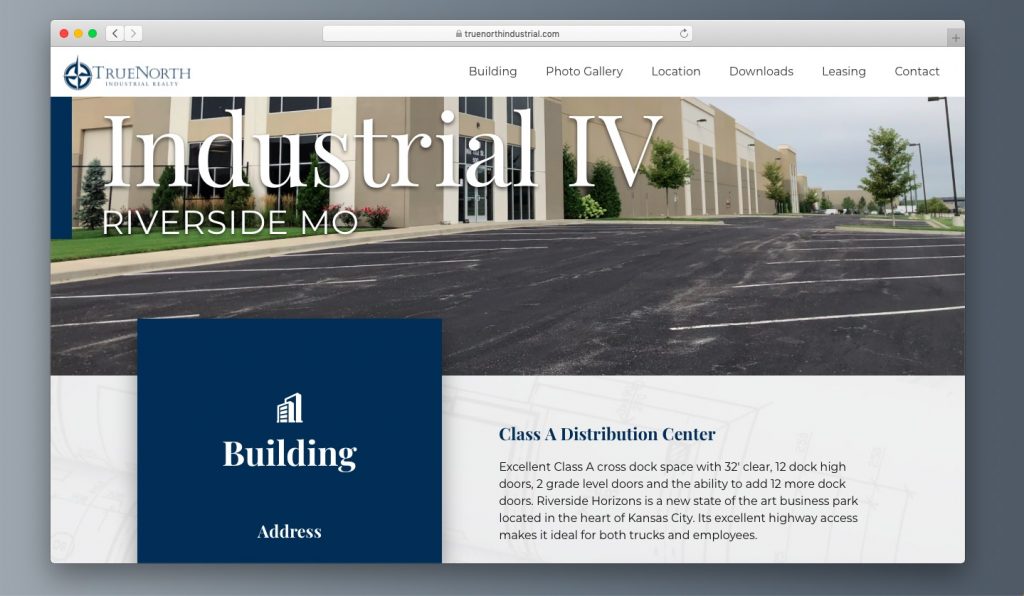
Professional Photography
Prospective tenants are likely comparing several similar properties. The right photography will highlight the property’s best attributes and help them see the features you’ve described. Quick photos on a smartphone aren’t enough. Hire a professional photographer who can capture the essence of a property for your marketing materials.
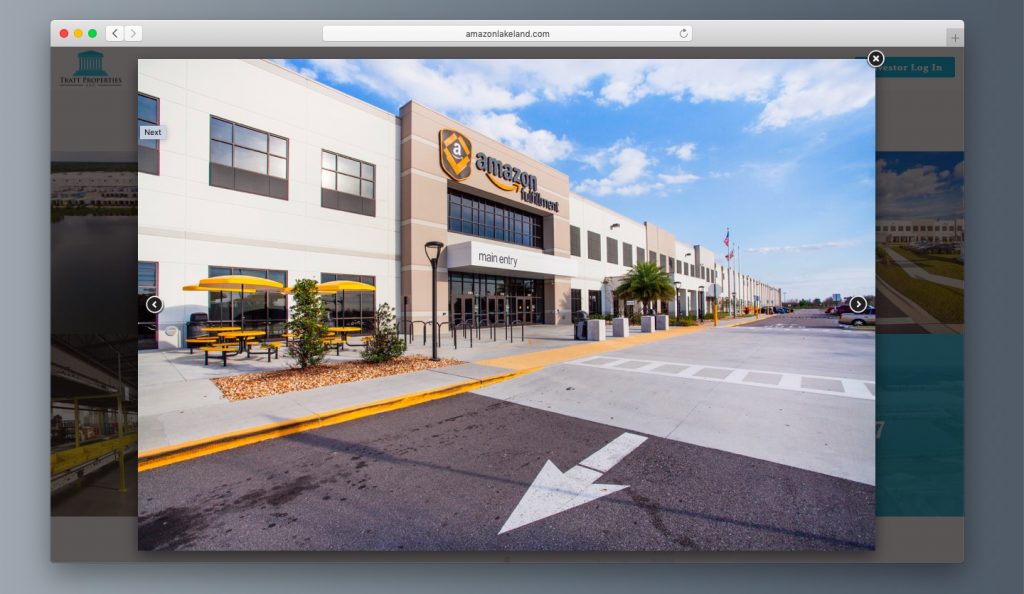
Video Content
Even professional photography can only get you so far. Video can help bridge the gap between a digital and a physical visit to the property. Aerial drone footage will emphasize location and layout, while interior videos can show how the facility is configured.
Location Maps
Location is critical for industrial companies. The closer they are to the highway, the faster they can push components out of the facility and into transit. At the same time, proximity to residential neighborhoods where workers live is also important. Show the facility and its relation to:
- nearby highways
- major neighborhoods
- airports
- railyards
- local amenities
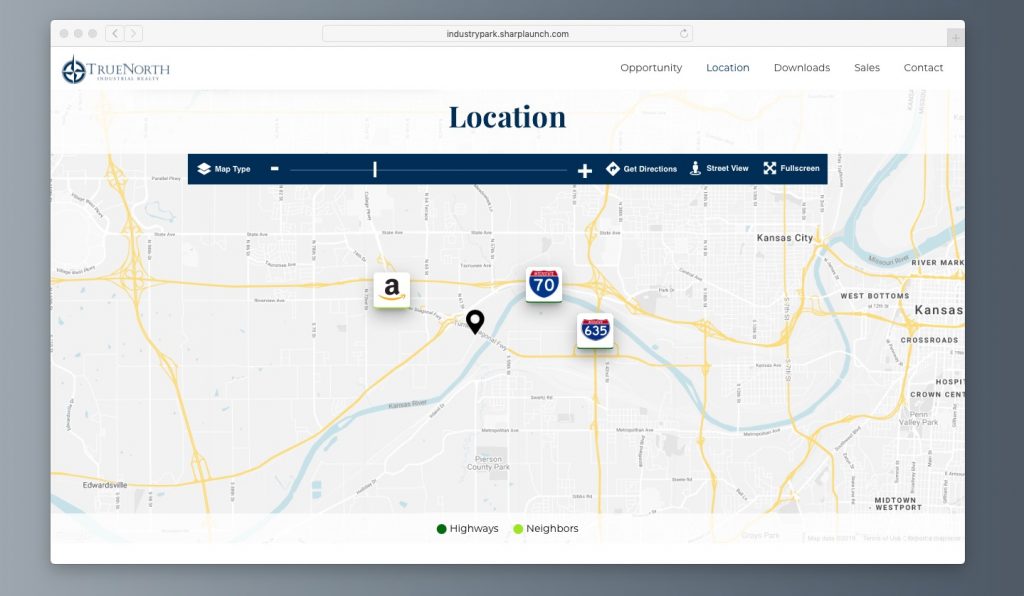
Site Plans & Floor Plans
If the property is part of a larger industrial park, it’s important to share not only the available space, but future expansion opportunities, and the current tenants if they are relevant to the selection process for your prospects.
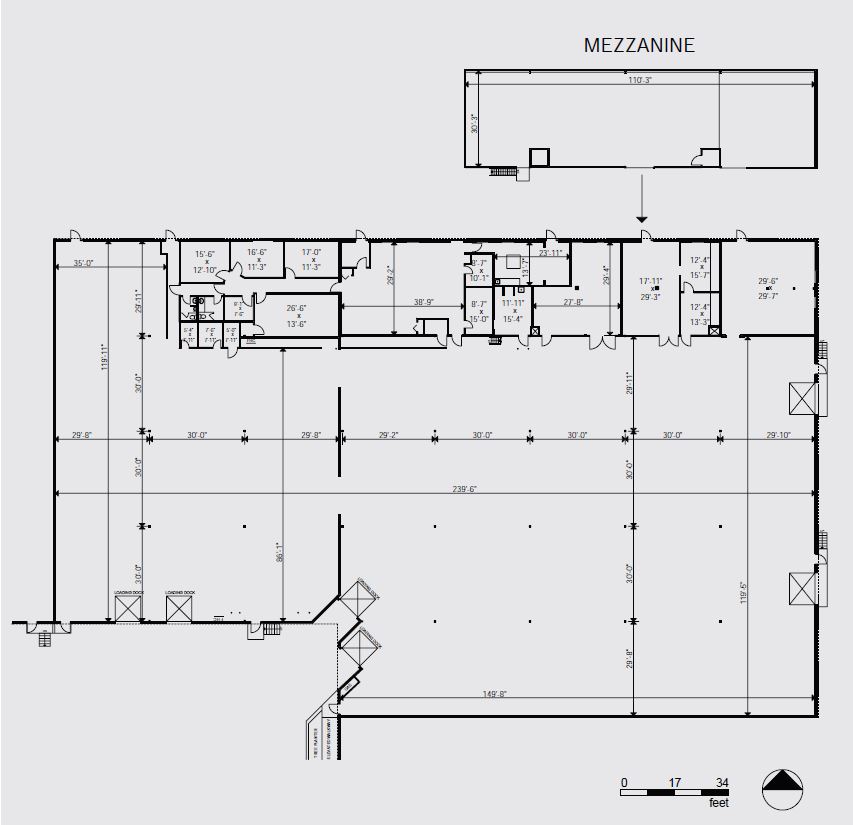
Building Certifications
If the property has received a building certification, list them on your description and advertise them to the appropriate audience. This can be a major selling point to the right prospective tenant if you properly promote the property in a place they will see it.
Team Members
Share details about your commercial or industrial real estate company and your experience in working with industrial tenants and buyers. Because of the unique needs of these companies, it’s important to highlight your experience in a way that speaks to the needs they have voiced.
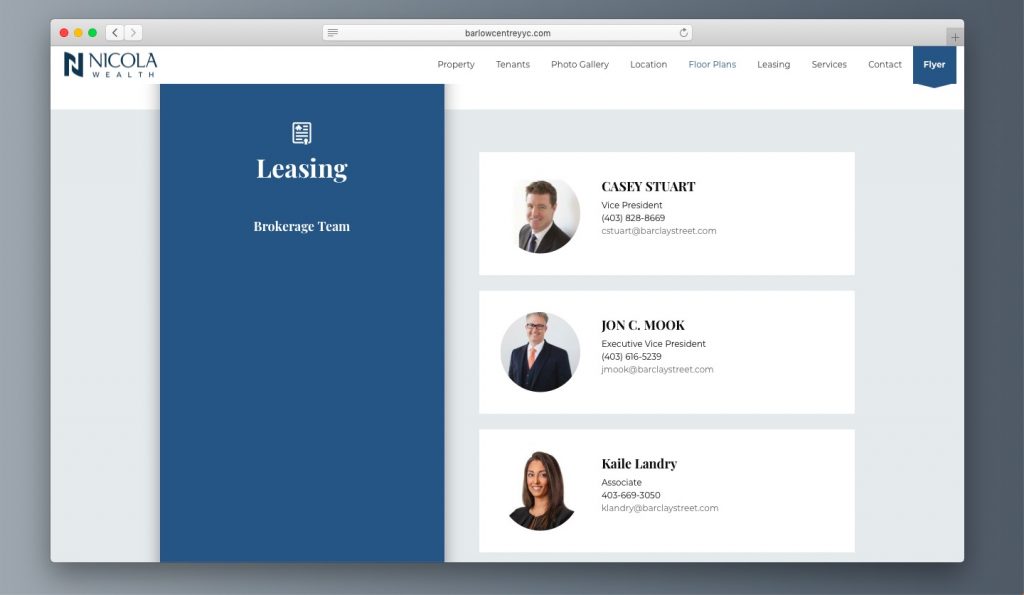
2. Create Key Marketing Assets
Industrial investors and tenants are evaluating several opportunities for dozens of important criteria.
Make it easier for them by packaging important sales and lease assets in an easy to access format that they can view or download from your property website.
Here’s a quick checklist of the key components you should have for your marketing campaigns, whether you are selling or leasing the property.
Sales Assets
The following assets are invaluable when promoting your properties to potential investors:
- Interactive Deal Sites – Build individual websites for each property that outline the key highlights of the property (as described above), and easy access to the key selling documents needed for further consideration.
- PDF Teaser – Create a downloadable PDF version of the materials you’ve listed on your deal site so prospects can share it with colleagues or print and review offline in the future.
- Offering Memorandum – Publish a visual presentation that outlines extensive details beyond your initial deal site summary for download and future reference.
- Email Templates – Prepare professional HTML templates that can be used for sharing deal announcements, sending reminders to prospects who are in the consideration funnel, soliciting offers, or other direct communications with new or existing prospects.
Lease Assets
If you plan to lease your industrial property to tenants rather than sell to investors, your marketing assets will look slightly different. They should include:
- Property Website – A dedicated property website highlights the property details, location, configuration, and other key elements for someone who might be evaluating multiple locations at the same time. Information should be clearly presented and easy to reference.
- Property Flyer – Prepare a PDF version of your property website with a professional layout that can be shared or printed for future reference easily.
- Email Templates – Your email templates should be designed to highlight key elements of your property for rent. Create unique templates for announcements, followup messages, nurturing messages for prospects, and other key communications.
3. Promote Your Industrial Space
After you’ve prepared the web, print and email-based materials needed to promote your industrial property, it’s time to run your campaigns. Your goal is to expand the reach of your marketing efforts beyond your existing audience, and support your brokers’ efforts in generating and nurturing leads.
There are several channels through which you can do this. Several of the most effective are outlined below.
Display on Company Website
Individual property websites are only one piece of the digital puzzle. Your company’s primary website should be designed to highlight and share new properties with visitors based on their interests.
An interactive property search engine can help accomplish this, allowing users to search by location, property type, current availabilities and more. It can also showcase related properties, ensuring prospective investors and tenants see your full portfolio if one property doesn’t capture their attention.
Within your listings, be sure to highlight key points listed above, but also link to the property website where they can find more information if they are interested. These listings should also include links to key downloads, as well as forms to capture lead information if they are interested.
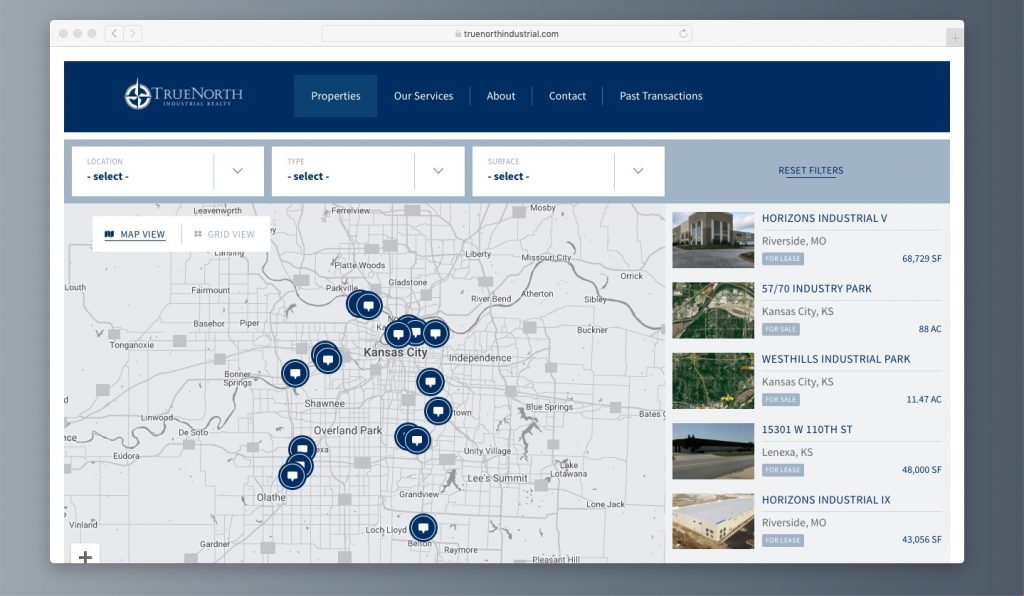
Send Email Campaigns
With the email templates you’ve developed, you can now reach out to new and existing contacts about your industrial property for lease or sale. At this stage, you should have a sizable database representative of the different types of properties you represent and the locations you serve. To best leverage this database into potential deals, consider the following:
- Segmentation – Use metadata about the contacts on your list to segment based on location, interest, property type, and previous client status. This will allow you to send emails only to those who find them relevant.
- Customize Messaging – With those segments, you can now customize your messaging to target individuals based on several factors. Write emails for investors, potential tenants, and previous clients. Write for specific pipeline stages as well – if someone is just beginning their search, messaging should be different than if they just requested an on-site tour.
- Nurture New Prospects – Proactive outreach is an effective way to leverage your email list and garner interest in a newly listed property. Email can also help nurture new prospects. Contacts who complete forms but don’t answer the phone can be sent relevant emails over a series of weeks to keep your company top of mind and push them further down the sales funnel.
Use this guide to help you get started with email marketing.
List on CRE Portals
While you likely already have listed your properties on the largest commercial real estate listing sites like LoopNet and CoStar, there are dozens more that cater to specific geographic markets as well as some property types. While most CRE listing sites segment and emphasize industrial properties, be sure to evaluate other potential options based on where you are selling and the exact nature and size of your property.
Promote on Social Media
It’s important to build up your profiles and influence on key social media channels when your prospective spend time online, but it should be done carefully. It’s easy to overinvest time and money on channels that provide minimal or no return.
Read more about how to leverage social media marketing for industrial real estate listings in our comprehensive guide.
Consider Paid Advertising
The fastest way to reach your target audience is through paid advertising. Fortunately, there are several options to do so – many of which allow you to turn on, test, and run ads quickly.
To determine how best to cater your message, allocate your marketing budget, and build an effective campaign, here are three advertising options to get you started.
- Google AdWords – Google’s ad network reaches 92% of all Internet users through web searches, display ads, retargeting, mobile devices, and video. If someone searches online, you can likely reach them with an ad in Google’s network. Even better, you can do it in just a few minutes and segment based on specific search terms, location, and demographics. There is no better way to quickly target a specific audience for your campaigns.
- CRE Industry Sites – Industry news sites and blogs often sell advertising that is guaranteed to reach a target audience. Especially if you are in a large market that caters to buyers and tenants in a specific geographic region, this type of advertising can be highly targeted, allowing you to reach a high number of visitors quickly.
- Trade Journals – In an information-centric industry, CRE trade journals remain relevant for commercial real estate professionals. Advertising in these can help target individuals looking for new properties or partners who can help bolster the visibility of your property to a larger audience.
Industrial Property Website Examples
Aero Business Campus
Mississauga, ON
Owner: Nicola Wealth Management
Marketed by: JLL
Amazon Lakeland
Phoenix, AZ
Owner: Tratt Properties
Marketed by: Tratt Properties
Barlow Centre
Calgary, AB
Owner: Nicola Wealth Management
Marketed by: JLL
First Rose Garden
Phoenix, AZ
Owner: Capstone Advisors
Marketed by: Capstone Advisors
Related Blog Posts
Marketing Best Practices
Marketing Toolkit for Real Estate Investment Sales
As an investment sales team in commercial real estate, having the right tools at your...
Company updates
Avison Young Selects SharpLaunch as Exclusive CRE Marketing Solution Across U.S. and Canada
SharpLaunch delivers a unified global marketing experience and seamless integration,...
CRE Technology
How to Integrate SharpLaunch with Salesforce
While Salesforce is a powerful CRM, it’s not specifically designed for the unique needs...


